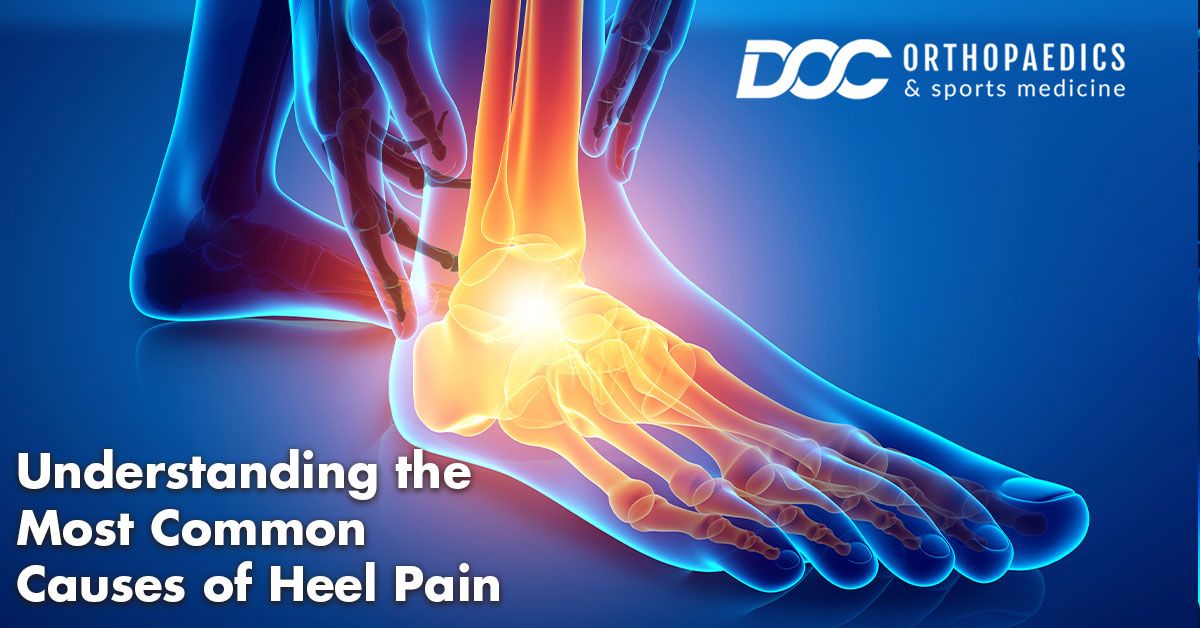
Understanding the Most Common Causes of Heel Pain
The most common causes of heel pain
Heel pain is one of the most common problems that affect the foot and ankle. Although your feet are built to handle a heavy load, too much stress can cause pain and discomfort in your heel. IT can be tempting to ignore, especially if it starts gradually, but disregarding a sore heel can lead to extreme pain or even a chronic condition that may lead to more problems.
What causes heel pain?
There are a few things that can cause heel pain, short of injury. Pounding your feet on hard surfaces, especially during athletic activity but also work that requires indoor walking, can cause heel pain. Also, wearing shoes that irritate the sensitive tissues of your heel – both bottom and back – can create issues. Most significantly, continuing with behaviors that cause stress on the heel after you’ve noticed pain can cause long-term damage.
Here are some things to watch for:
- Pain beneath your heel (on the bottom of your foot) or behind your heel (below your ankle) that builds slowly over time
- Swelling in the heel
- Bruising of the heel
- Heel skin that has thickened, turned red or is swollen
- A bump on the back of the heel that feels tender or warm to the touch
- Inability to walk normally
How do I stop my heel from hurting?
You’ll find that most heel pain will subside on its own with enough rest. However, you should be aware of certain pains and injuries that may require a doctor visit:
Pain beneath the heel
- Stone bruise: If you step on a hard object such as a rock, a bruise may occur on the underside of your heel. You may be able to see discoloration, but the pain will go away with rest.
- Plantar fasciitis: Repetitive activities such as running or jumping can cause inflammation in the tissue band connecting the heel bone to the base of the toes. The pain is centered under your heel and may be mild at first but can flare up again after rest. Exercise, anti-inflammatory medication, or a special heel pad may be necessary to treat this overuse injury.
- Heel spur: Untreated plantar fasciitis can develop into heel spur where the tissue band connects to your heel. An X-ray may be necessary to diagnose the spur, and treatment is similar to plantar fasciitis. Rest and stretching are necessary until pain completely diminishes.
Pain behind the heel
Increased activity, repetitive motion, or even inappropriate shoes can cause pain behind your heel, on the back of your leg where your foot meets your ankle. Typically, this means you have inflamed the area where the Achilles tendon inserts into the heel bone. The two most common causes are:
- Calcaneal Apophysitis: In this condition, the center of the heel bone becomes irritated as a result of a new shoe or increased athletic activity. This pain occurs in the back of the heel, not the bottom. Calcaneal apophysitis is moderately common in growing children between the ages of 8 and 14, particularly those who participate in sports that require a lot of jumping.
- Bursitis: The bursa is a sac that lines many joints and allows tendons and muscles to move easily when the joint is in motion. In the heel, bursitis – or inflammation of the bursa – may produce pain at the underside or back of the heel. In some cases, heel bursitis is linked to structural problems of the foot that cause an irregular gait (way of walking). In other cases, wearing shoes with inadequately cushioned heels can trigger bursitis.
If you’re experiencing pain either beneath or behind your heel, you should consider a visit to an orthpaedic specialist. While many causes of heel pain can be addressed with rest and medication, it’s important to have a proper diagnosis to ensure your pain doesn’t progress into a more significant problem.
Since 1972, the specialists at DOC Orthopaedics and Sports Medicine have been committed to providing exceptional orthopaedic care through innovative techniques, quality services, patient communication and education. With specialties ranging from general orthopaedics and physical therapy to sports medicine, joint replacement and more, the doctors at DOC Orthopaedics and Sports Medicine can provide local expert care for any orthopaedic disorder or injury and help put your life back in motion.

